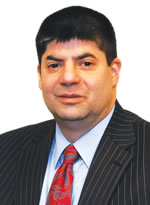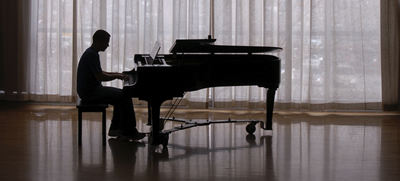Allegro
A Sound Victory?
What happens when a neighbor complains about two pianists and their practice routine...
Volume 115, No. 12December, 2015

Harvey Mars, Esq.
Harvey Mars is counsel to Local 802. Legal questions from members are welcome. E-mail them to HsmLaborLaw@HarveyMarsAttorney.com. Harvey Mars’s previous articles in this series are archived at www.HarveyMarsAttorney.com. (Click on “Publications & Articles” from the top menu.) Nothing here or in previous articles should be construed as formal legal advice given in the context of an attorney-client relationship.
As I have noted several times, the law in New York State is clear: professional musicians have the unfettered right to practice in their apartments during reasonable hours. For instance, in a long-celebrated decision, the New York Criminal Court has held that “musical instrument practice is one of the certain inconveniences which people living in populous areas must tolerate.” People v. Markovitz, 102 Misc. 575, 423 N.Y.S. 2d 996 (Crim. Ct., N.Y. 1972). This right has been vigilantly protected by the courts.
Besides being the law, it’s common sense that living in New York City requires being tolerant of background noise. Nevertheless, musicians often have to deal with perturbed neighbors who have no patience for daily practice routines. A recent litigation in New York State Supreme Court that I am involved in provides a textbook example.
This defendants are two extremely talented piano students who are presently studying at Mannes. The rigors of remaining in the program require them to practice daily. Unfortunately, a neighbor has sued them for nuisance behavior.

Photo: latortugamorada via istockphoto.com
In New York, a common-law nuisance claim consists of behavior constituting a continuous invasion of the rights of the other residents in the building. A private nuisance claim requires factual allegations that a defendant is engaging in behavior that “substantially, intentionally and unreasonably” interferes with a plaintiff’s right to use and enjoy real property. Forras v. Rauf, Misc. 3d 1215(A) (N.Y. Sup., 2012). It is hard to fathom how hearing a talented pianist practice Chopin and Brahms is a nuisance. But, according to this neighbor, it is.
To establish the elements of a nuisance claim, the plaintiff relied upon provisions in the New York City Noise Code (Local Law No. 113) and employed an acoustical engineer to supply evidence. It should be noted that sound levels prohibited by the noise code are different for “impulsive sounds” (sounds of short duration, where each peak of sound lasts two seconds or less) and “non-impulsive sounds” – those of longer duration. Section 24-203(34) of the noise code specifically provides that music is not an impulsive sound. And section 24-218 states that a violation occurs if “sound other than impulsive sound, during the hours between 7 a.m. and 10 p.m., is more than 10dB(A) or more above the ambient noise level.” The abbreviation dB(A) is a technical term; it basically refers to decibels.
So it appears that this provision may apply to music performance. But there are two factors that must be considered. First and foremost, the measuring stick here is the ambient noise levels at the location. In New York City, ambient noise is very often loud. Thus acoustical measurements must be relative to and account for ambient sound levels. There are technical proofs required: second measurements must be recorded at maximum sound levels (the term is “Lmax”), with a sound level meter set to “slow response.”
In the litigation in which I am involved, ambient noise levels were ignored. Sound was measured without accounting for indigenous noises and sounds. Further, the sound meter was set for “fast response,” a factor that skewed the results towards finding the decibel level higher than it actually was.
Ultimately, my clients had to hire their own acoustical engineer to rebut the findings of plaintiff’s engineer. It was a costly proposition, but one that will ultimately lead to victory. (I will report on the final decision once it’s rendered – stay tuned!)
It should be noted that my clients made every effort possible to abate the sounds penetrating their neighbor’s apartment. They placed acoustical material throughout their house and shag carpets under the piano. They attached sound-absorbing metal casters to the piano’s legs. They even tried to develop a practice schedule that was satisfactory to their neighbor. These efforts, though futile, placed them in good standing with the court.
It should also be recognized that a violation of the noise code does not automatically render a musician liable for common-law nuisance. That legal claim requires “intentional and pervasive” conduct that just doesn’t exist on the facts of this case.
The lesson to be learned here is that whenever musicians encounter an irate neighbor who is complaining about their right to practice, it is a good idea to first try to work these issues out. The law is on the musicians’ side, but failure to take a reasonable, balanced and strategic approach can lead to costly and time-consuming litigation. It also helps to get a sympathetic opinion from your management company or co-op board.
However, despite best efforts to be reasonable, musicians can still be sued by their neighbors. Be mindful of the sound code provisions and requirements and keep a log of practice times and dates – as well as dates and times of complaints. If possible, keep a log of sound level readings. Finally, rest assured that the law is on your side and that the great likelihood is that you will prevail.
